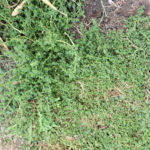“Weeds in Defense of nature’s most unloved plants” by Richard Mabey
published, 2010 by Harper Collins is a really lively and fascinating tale of history and botany.
Plantain Plantago lanceloata & Plantain major have a long history I learned in this book. They were present in all the prescriptions of magical herbs from the earliest Celtic fire ceremonies when medieval peasants wove magic into their lives. They used them from appeasing the dangerous forces in the air everywhere that caused failed harvests, a husband’s adultery and disease, to young girls finding their love match. The most potent protection was to employ a charm or potion based on the Anglo-Saxons’ nine sacred herbs, including well known weeds: mugwort or Croneswort, stime (watercress), maythen (mayweed or chamomile), atterlothe (probably betony), wergulu (stinging nettle), chervil, fennel, crab apple and plantain known as ‘the mother of worts’. ‘Wort’ is an old English name for herbaceous plant, first used before the 12th Century.
Plantain’s powers extended from healing to divination – helping to see into the future. On the summer
solstice when the veil between the human and supernatural world was at its thinnest, the flowering stems were used in a charm to predict whether young women would fall in love. The recipe for the charm: pick two ‘rat’s-tail’ flowering spikes and remove any visible purple anthers (the pollen bearing tips of male organs). Wrap the flower spikes in a dock leaf and place under a stone. Next day if more anthers had risen erect from the flowering spike, love was assured. Even if we think it is just superstition, I love that there was more interaction with nature and plants and trust in their powers. We could encourage children to do more of this enhancing their imaginary worlds.
The Anglo-Saxon name for broad leaf plantain (Plantago major) was ‘Waybroad’ or ‘Waybread’ meaning ‘a broad-leaved herb which grows by the wayside.‘ And it is true it thrives on roadways, paths, church steps, where humans have caused disturbance and its tough, elastic low growing leaves tolerate being walked on, driven over or scuffed. Deep, fibrous roots enable
them to survive such compacted, dry places. They do end up looking torn and ragged but they don’t die. So in sympathy (the principle behind magical beliefs in pre-scientific cultures is that like would cure like) plantain was believed to be effective for human crushing and tearing injuries (and it is used to heal wounds – containing tannins to help close wounds and stop bleeding).
The name plantain derives from planta, or foot, because of how it grows in a rosette flat on the ground. A favourite of
the American Indians and Gypsies everywhere it is effective in treating bites, stings, sores, rashes, eczema, boils and burns. Here is a recipe for a poultice using fresh spit from Susun Weed www.susunweed.com
Fresh Herb Spit Poultice
Pick one or two medium-sized plantain leaves. Chew the fresh plant material for 10-30 seconds mixing it well with saliva. Apply to the affected part. Bleeding usually stops within 30-60 seconds. Pain and itching is generally relieved within 10-30 seconds. Hold spit poultices on with an adhesive bandage for long-term benefit. I keep a spit poultice bandage on until the wound is well healed.
If spitting doesn’t appeal you can either rub the leaf between your fingers or dip a leaf in boiling water to soften it and then put it on the bite or sting with a plaster or bandage. I got bitten by mosquitos many times last evening and it was so itchy. I grabbed some plantain leaves – the narrow leaf (Plantago lanceolate) as my broadleaf plantains have already died down in this dry weather. I didn’t chew them I just rubbed them to get the juice to form and then rubbed them on the bites and it really is magical in taking out the intense itch!
Next workshop March 28th 2020, 10-2pm, focusing on autumn weeds & tonics for winter.








